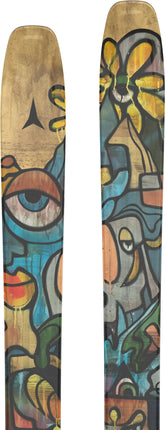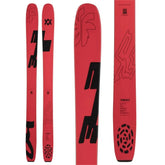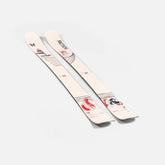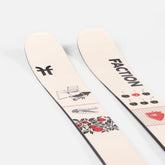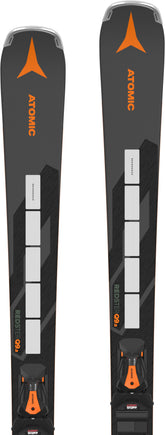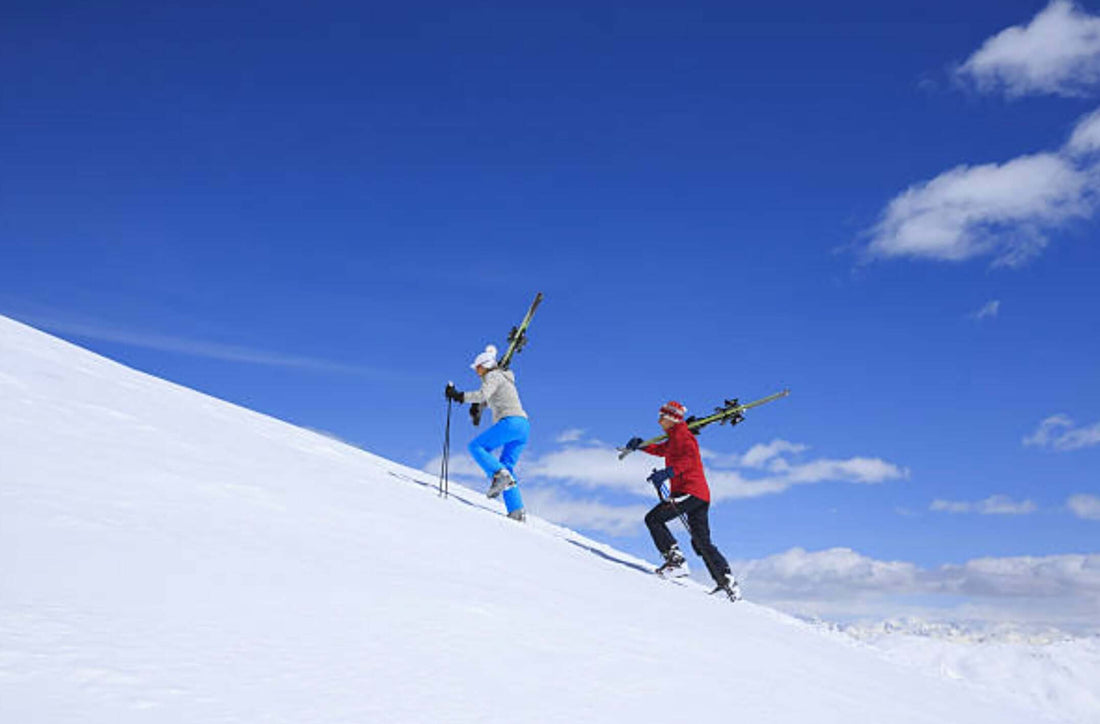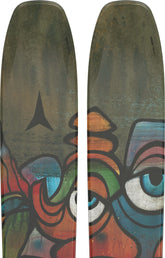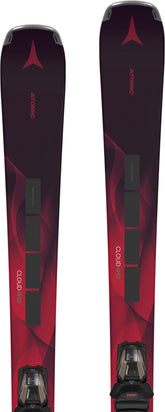Fitness Reimagined: Why Women Are Looking Uphill
What if your workout didn’t start in a fluorescent-lit gym, but on a quiet slope bathed in golden dawn light?
For a growing number of women, uphill skiing is becoming the winter fitness ritual of choice. It delivers the burn of high-intensity cardio, the calm of morning meditation, and the thrill of a summit view — all before most people have finished their first cup of coffee.
But here’s the thing: uphill skiing doesn’t require you to be a hardcore backcountry expert. In fact, the easiest way to start is right where you’re already comfortable — your local resort.
A Shift in the Ski Culture
There’s a noticeable shift happening on the slopes — and it’s being led by women. More and more female skiers are moving away from traditional resort laps and into the world of uphill and backcountry skiing. What once felt like a niche, gear-heavy boys’ club is now blossoming into an inclusive space where women are reclaiming the climb on their own terms.
From ski meetups led by women, to mentorship programs and all-female avalanche courses, the uphill community is becoming a place where connection, empowerment, and growth are prioritized alongside technical skill.
Physical Benefits That Go Beyond the Chairlift
Uphill skiing is cardio, strength, and endurance training rolled into one beautiful, snow-covered package.
-
Cardio-Intensive, Low Impact:
Unlike pounding the pavement on a run or grinding through a HIIT class, skinning uphill is gentle on your joints — yet it gets your heart rate soaring. The slow, sustained climb builds aerobic capacity without the wear and tear of high-impact workouts. -
Full-Body Engagement:
Every stride activates your glutes, hips, and hamstrings. Add in the poles, and you’re working your upper body too. Your core stabilizes each movement, keeping you balanced as you ascend, building strength you’ll feel long after you’ve unclicked your skis. -
Endurance + Calorie Burn:
Depending on the incline and pace, an hour of uphill skiing can burn upwards of 1,000 calories. It’s an incredible endurance builder that translates directly to stronger downhill performance — and overall fitness gains.
Mental Benefits: Strengthen Your Mind While You Train Your Body
There’s a quiet kind of magic that happens when you trade lift lines for fresh tracks.
-
Mindfulness in Motion:
Without the buzz of crowds or chairlift noise, uphill skiing offers something rare — mental stillness. The rhythm of skinning, your breath syncing with movement, the crunch of snow beneath your skis — it all becomes a moving meditation. -
Mood Boost for the Whole Day:
Early morning ascents often mean witnessing the alpenglow, greeting the day in solitude before most of the world is even awake. It’s a powerful reset — replacing grogginess with clarity, and stress with strength. -
A Sense of Ownership:
There’s something transformative about reaching the summit under your own power. You don’t just arrive — you earn it. That sense of control and accomplishment stays with you, and it extends beyond the mountain.
Start Where You Are: Resort Mornings as a Launchpad
The best way to begin your uphill journey? At the resort, before the lifts start spinning. Many ski areas now offer designated uphill routes for early birds — just check their uphill policy before you go.
Technique & Tips for Beginners
Uphill skiing might look intimidating from the outside, but with a few basics dialed in, it becomes surprisingly intuitive. Whether you’re aiming for a pre-lift resort lap or dipping your toes into touring terrain, the key to enjoying your ascent lies in posture, pacing, and preparation.
Skinning Basics: Movement Mechanics Matter
The rhythm of skinning is different from downhill skiing — think glide, not push. Your focus should be on efficiency, not speed.
Body Posture and Stride Length
-
Stand tall, not hunched. Resist the urge to lean too far forward — your weight should stay centered over your feet.
-
Short, smooth strides are your best friend. Think of it as hiking on snow with a little extra slide.
-
Keep your upper body relaxed. Let your poles assist, but don’t rely on them to pull you forward.
Mastering Transitions
-
Transitioning refers to the switch from uphill to downhill mode — and it’s where beginners often fumble.
-
At the top, you'll:
-
Remove your climbing skins and store them (pro tip: fold sticky side to sticky side to keep them clean)
-
Lock your touring bindings into ski mode
-
Tighten your boots and switch them from walk to ski mode
-
-
Practice this at home or at the base before heading out. It’s a skill worth mastering for efficiency and safety.
Pacing Yourself: Energy Is Everything
Skinning isn’t a race — and treating it like one is a fast track to exhaustion.
How to Avoid Burnout on Your First Ascent
-
Start slower than you think you need to. The adrenaline will tempt you to push hard — resist.
-
Take micro-breaks to regulate your breathing and check your body temperature.
-
Use landmarks (trees, towers, turns) as mini goals to maintain a sustainable rhythm.
Warm Up to Prevent Injury
-
Spend 3–5 minutes before you click in doing dynamic movements: leg swings, hip circles, lunges.
-
Cold muscles are stiff muscles. A proper warmup will help you avoid strains and make your climb smoother from the start.
Common Mistakes to Avoid (Trust Us, We’ve Been There)
Overdressing
-
Skinning heats you up fast. Dress like you’re going for a run in cold weather.
-
Stick to moisture-wicking base layers and stash an insulated jacket for the descent.
-
Vent layers as needed — unzipping early is better than sweating through your clothes.
Poor Gear Fit
-
Boots that pinch or slip? That’s a recipe for blisters and misery.
-
Bindings that don’t transition smoothly? They’ll frustrate you mid-tour.
-
Take the time to get your gear properly fitted — especially boots. (The Hawx Prime XTD 115 W GW is a top-tier women’s option for comfort and control.)
Neglecting Hydration & Nutrition
-
Just because it’s cold doesn’t mean you’re not sweating. Dehydration is sneaky in winter.
-
Pack a hydration bladder or insulated bottle, and sip often — even if you’re not thirsty.
-
Bring easy-to-digest fuel: energy chews, nut butter packets, or a protein bar that won’t freeze solid.
Bottom Line
Uphill skiing is a skill you build with repetition — not perfection. The more you tune into your body’s rhythm, your gear, and the terrain, the more intuitive it becomes. Start slow, stay curious, and give yourself grace as you learn. Before long, those first clumsy climbs will become your favorite part of the day.
Gear Spotlight: The Essentials for a Confident Ascent
Uphill Ski Package with Atomic Maven, Shift 13 Bindings & Atomic XTD Boots
This all-in-one package is the ultimate setup for women making the leap into touring.
- Atomic Maven Skis: Lightweight agility with stability underfoot.
- Shift 13 MNC Bindings: Touring mobility + alpine retention.
- Atomic Hawx XTD Boots: Walkable comfort + downhill power.
Atomic Shift 13 MNC Bindings
Add touring capability to your current setup.
Hawx Prime XTD 115 W GW Boots
Lightweight uphill feel meets expert-level downhill flex.
Skinning 101: Tips for a Smooth First Tour
- Dress like you’re going for a run — lightweight, breathable layers.
- Keep your stride short and smooth.
- One lap is enough when you're starting out.
- Hydrate and fuel before and after your climb.
- Always check resort uphill policies.
When You’re Ready to Go Beyond
- Take an Avalanche Safety Course (AIARE Level 1)
- Gear up with beacon, shovel, and probe
- Never tour solo; go with a group
- Check avalanche conditions before each outing
Final Thoughts: Strength on Your Terms
Uphill skiing isn’t just a trend — it’s a return to owning your body, your fitness, and your experience in the mountains.
Whether you’re climbing to clear your mind, build endurance, or just catch the sunrise in peace, this sport offers something powerful: the ability to move through the winter landscape under your own power.
So why wait at the bottom for the lift? Start climbing.
